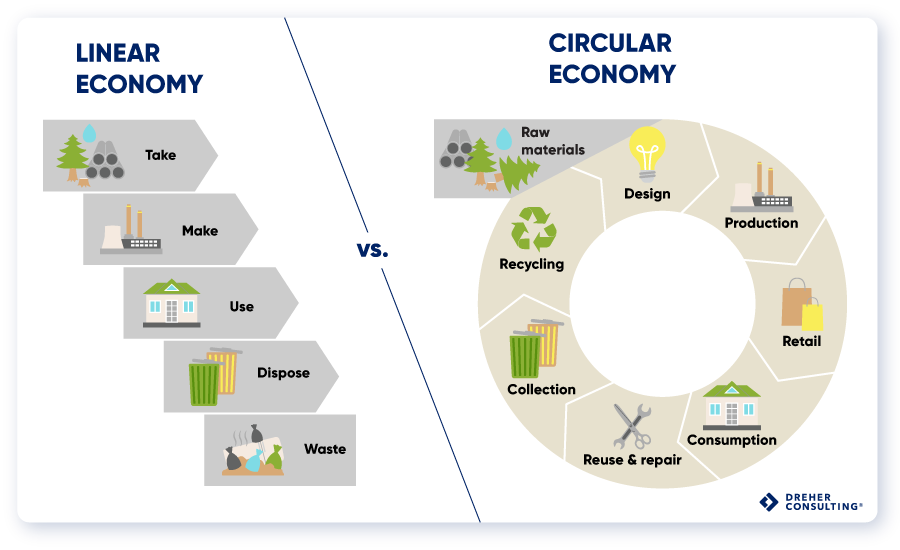As a CEO or business owner you know the importance of sustainability in the success of your business. A great way to achieve this sustainability is by creating a circular economy. A circular economy means that resources are kept in a loop, and waste is minimised: a concept that can benefit your business immensely, from increasing revenue to decreasing carbon footprint. In this publication post, we will outline key points you should consider when creating a circular economy in your business today.
Evaluate Your Current Business Model
The first step in creating a circular economy is assessing and evaluating your current business model. Identify inefficiencies and resources that are wasted. You can do this by reviewing your production process, the materials you use, and your supply chains. Once you identify these areas, you can then determine what steps to take to reduce waste and inefficiencies.
Embrace the Three R's Principle: Reduce, Reuse, and Recycle
Reducing waste should be your top priority in a circular economy. You can do this by reducing the amount of resources you use in production, minimising packaging, and cutting back on inefficiencies. Reusing resources is also essential, either within your operations, or through partnerships with other businesses. Finally, recycling is a well-known method of reducing environmental impact, but only 9% of plastic is actually recycled. By prioritising the three R's, you can reduce your carbon footprint and save costs at the same time.
Linear Economy versus Circular Economy – What's the difference?

Utilise Technology and Innovation
New technologies and innovations can help your business transition to a circular economy. For example, innovative supply chains that use blockchain technology can provide real-time tracking of resources and materials, allowing for better transparency and a potential for less waste. Renewable energy sources such as wind and solar can be integrated into the production process, reducing the reliance on finite resources. By using technology and innovation, you can enhance your sustainability efforts and increase your competitive edge.
Encourage Collaboration and Partnerships
Collaboration and partnerships can also be key in creating a circular economy. By partnering with other businesses or organizations, you can identify ways in which you can share resources or reduce production-related waste. Additionally, partnering with customers can help you identify new potential opportunities for circular economy practices, as well as increasing customer loyalty to your brand.
Educate and Involve Your Employees
Your employees are also a vital part of creating a successful circular economy. Educate them on the importance of sustainability and how they can help reduce waste and save resources. Encourage them to share their ideas and suggestions on how your business can improve in this way. By involving your employees in the process, you can create a shared sense of responsibility and a sense of purpose.
The Future is Now!
Creating a circular economy in your business can lead to numerous benefits, from reduced costs to positive environmental impact. By following the key points outlined above, you can transform your business into a more sustainable and successful one. The benefits of a circular economy are multifaceted, from compliance with regulations and enhanced reputation to the satisfaction of contributing to the health of the planet. As a CEO, you have the power to implement these steps and improve your business for the future.
Are you looking for more topics on Sustainability? Find an overview of all articles here: Blog Sustainability
or find out more about our consulting services on our website: Sustainability


